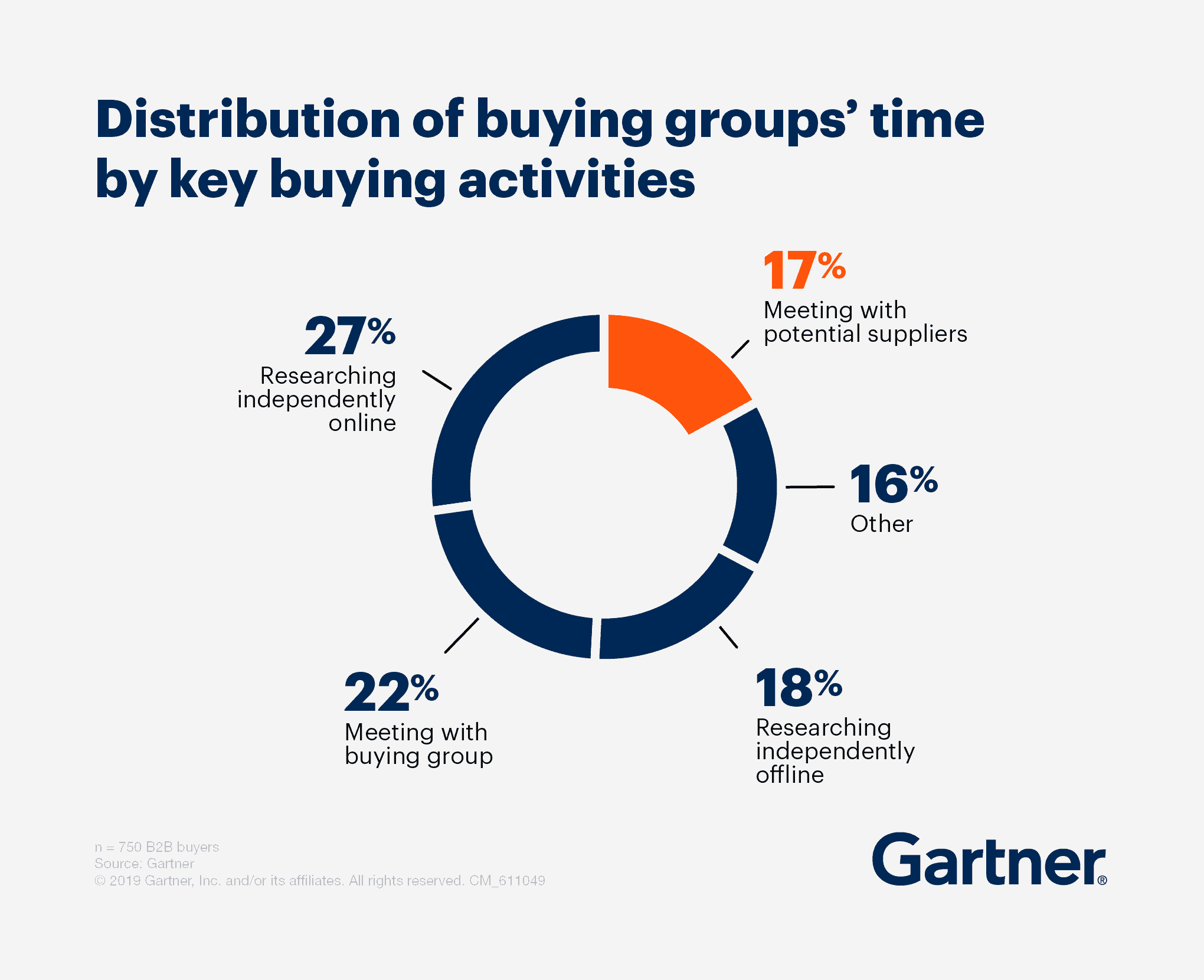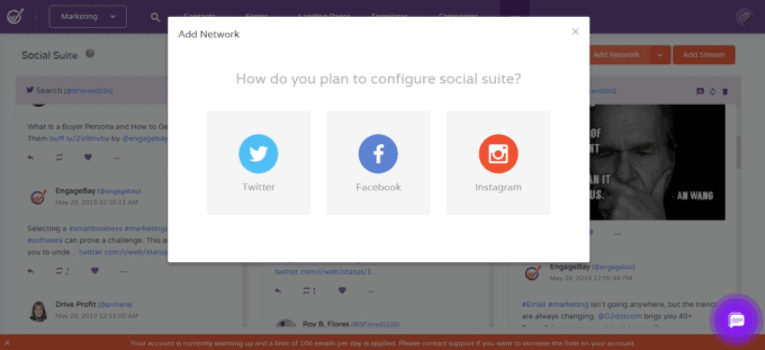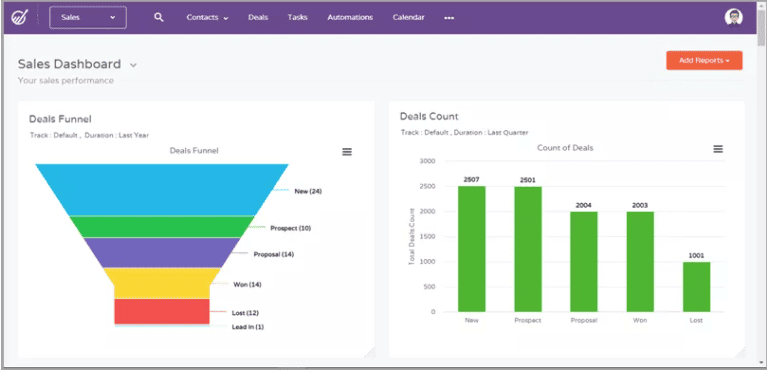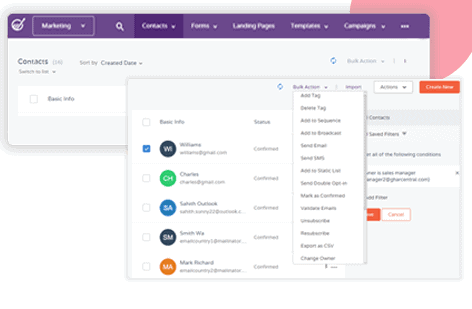Are you still relying on outdated sales models to reach your customers? Well, it’s time to wake up and smell the coffee because inside sales is where it’s at!
According to 2023 statistics, as compiled by Spotio, an outside sales call costs $308, an inside sales call costs $50
Believe it or not, a whopping 37 percent of companies have already embraced the power of inside sales. Meanwhile, only 27 percent are stuck in the field sales bubble, 23 percent are snoozing with Internet sales, and a mere eight percent are lost in the maze of channel sales.
If you’re not on the inside sales bandwagon, you’re falling behind the competition faster than a snail on roller skates. And guess what? This gap between you and your fiercest rivals is only going to widen.
Picture this: your customers, the lifeblood of your business, start to notice this chasm. What do you think they’ll do? They might just jump ship and sail straight into the arms of your competitors.
But fear not, there’s still hope! It’s time to take charge and get back in the game by diving headfirst into the world of inside sales.
In this article, we’ll equip you with everything you need to conquer inside selling. From a crystal-clear definition of inside sales to uncovering the differences between inside and outside sales models, we’ve got you covered. We’ll even spill the beans on the essential tools you’ll need and how to seamlessly integrate your CRM for maximum success.
So what are you waiting for? Let’s dive into the thrilling world of inside sales and give your business the boost it deserves!
Table of Contents
What Are Inside Sales?
You have one question right off the bat, and that’s what does inside sales mean? Allow us to define the inside sales model before we proceed.
With this method of selling, your inside sales representative contacts customers through online means, email, or the phone.
Inside sales are also called virtual sales or remote sales because the in-person aspect of selling is removed.
The term inside sales came about sometime in the 1980s as a way to separate B2B and B2C selling from telemarketing tools, which is what the early form of inside sales encompassed.
Today, B2B inside sales are prevalent.
Your inside sales team stays in the office more often than not.
This frees up more of their time that these sales reps can spend speaking to customers rather than being held up in airports or flying for hours at a time, unable to get much work done.
Calls that a customer makes to the company are sometimes deemed as inside selling, as is cold calling.
That’s when your sales team member reaches out to an inside sales lead without having had any prior contact with them.
What Are Inside Sales? A Video:
Not all companies opt to have their own inside sales team, working instead with a third party to take care of this aspect of sales.
The company’s own sales team would focus more on the outside sales model instead of the inside sales model, which we’ll discuss more in the next section.
Over the decades, the term inside sales went from revolving around telemarketing to being a clear differentiator between inside sales and outside sales.
This is mostly due to how inside sales reps go about their job compared to telemarketers.
These inside sales reps don’t use a script, for starters. They’re also intelligent and creative, as they’re able to adapt and change their approach on the fly to more closely match the needs of a lead or customer.
The other duties and responsibilities of the inside sales reps are as follows:
- Generating sales data reports
- Closing deals with leads and customers
- Achieving quota, be that weekly, monthly, or quarterly
- Engaging with and nurturing leads as part of the conversion process
- Working to maintain current customers
- Accepting customer referrals and converting leads from this avenue as appropriate
- Establishing professional yet cordial relationships with customers to keep them buying again and again
- Addressing customer complaints, questions, and concerns to keep that professional relationship positive and profitable
According to a LinkedIn post from 2019 on trends in inside selling, of the 5.7 million United States-based salespeople recorded that year, almost half dealt in inside sales, 45.5 percent in all.
The other half, or 52.8 percent of sales reps, specialized in outside sales rather than inside sales.
What Is the Difference Between Outside Sales and Inside Sales?
Now that you have a better grasp on the inside sales process, let’s next discuss inside sales vs. outside sales, namely, the differences between these two sales models.
Outside Sales Require More Travel
As we talked about in the last section, inside sales reps are not frequent fliers. That’s not to say they’ll never travel, but they’re not like outside sales reps.
These inside sales team members tend to go to every expo, event, convention, and networking opportunity they can to generate new leads, increase conversions, and boost their company’s bottom line.
That’s in their job description, after all. Outside sales embrace the realm of sales fieldwork with prospective and current customers.
Inside Sales vs Outside Sales – A Video:
Inside Sales May Cost Less Money to Implement
According to the link from Spotio from the intro, the average cost of an inside sales call is $50 while an outside sales call is $308.
The inside sales model saves money in other ways as well. Since inside selling isn’t as travel-intensive, a company can pocket some serious bank by implementing this form of selling.
Your company can forget about the spending on the expo tickets, the extra costs for attending panels and speeches, food, hotel, flights, and rental vehicles.
If the money saved is money earned, then the inside sales model can be quite profitable in this area alone, even before you begin considering the sales made on top of that.
Outside Sales Deal Much Less in Remote Selling
This one should come as no surprise, but outside sales reps aren’t nearly as invested in remote selling as inside sales reps are.
In The State of Sales report from Xant, they published a handy chart that paints a clear picture of where the priorities of remote selling lie with inside sales versus outside sales teams.

Image courtesy of Xant
As the chart shows, in the three years between 2014 and 2017, remote sales did increase for both inside sales and outside sales teams.
In 2014, outside sales reps spent only 24.1 percent of their time on remote sales while inside sales teams spent 62.9 percent.
Within those three years, the importance of remote sales in the eyes of outside sellers did increase.
Now, outside sales reps spent up to 45.4 percent of their time on remote sales, which is almost half the time.
The amount of time dedicated to remote sales for inside sales teams went up too, increasing to 74.9 percent. That means these inside sales teams spend under 30 percent of their time on other tasks.
Outside Sales Reps Outnumber Inside Sellers
Despite the clear lines in the sand between inside sales and outside sales models, you don’t have to use one at the expense of the other within your company.
Today, many businesses have both an inside sales team and an outside one that works in conjunction.
The inside sales reps may handle tasks like lead generation and then send that information to the outside sales reps.
Still, how many inside versus outside sellers the average company has does tend to skew more towards outside sales.
More data from Xant found that organizations that make over $500 million a year boast more outside than inside sales reps.
These outside sales professionals comprise a whopping 71.2 percent of a company’s overall sales team. That doesn’t leave much room for inside sales.
Even mid-sized companies, or those that make under $500 million annually, are dominated by outside sales team members, as they make up about 47 percent of these respective sales teams.

Image courtesy of Xant
The above chart sums up the split pretty well. In 2017, the average percentage of outside sales reps was 56.5 percent compared to 43.5 percent of inside sales reps.
Not much had changed in 2018, by which then 55.6 percent of sales teams specialized in outside sales and 44.4 percent in inside sales.
The gap has started to close as of 2019 though. Now, 54.5 percent of an average company’s sales team did outside sales and 45.5 percent inside sales.
Sales experts believe the split will eventually reach 50/50 levels, probably within the next two or so years.
Inside Selling Reps May Earn Less Money
Since outside sales representatives have so much one-on-one experience with leads and customers, it’s sometimes perceived that their level of job expertise is more profitable.
This is an erroneous assumption, but one that has persisted nonetheless.
HubSpot data on inside sales vs. outside sales discovered that outside sales reps tend to make 36 percent more money than inside sellers.
However, upon comparing on-target earnings, it’s believed that the annual income between these two types of sales reps is a little closer to being the same.
Read also: Sales Blitz Definition, Example, and Strategy
Why Are Inside Sales Important?
Don’t be fooled into thinking your company needs only the outside sales model because they’re sometimes more prioritized by companies.
As we had suggested, it’s best if your sales team is split between inside sales and outside sales for the best results.
Indeed, there are several viable reasons Inside Sales Box has come to such a conclusion, so let’s discuss these now.
Customer Preferences Aren’t What They Used to Be
We live in an age where everyone’s schedules are always jam-packed. When you’re not working, you have other activities and obligations that take up a lot of your time.
Now imagine, as the average consumer, that you have to take some precious time out of your day to meet up with a sales representative.
You know what they’re going to do, give you the same old tired sales spiel that you’ve heard a dozen times before.
Does that really sound like the best use of your time? No.
A sales approach like that is not only detrimental to the consumer’s time but to the outsider seller’s as well.
In sales, any time you’re not spending on selling is time wasted, and that goes double for missed or lost deals.
Inside Sales Box mentions data from Sales Benchmark that found that most customers, over 70 percent, would rather speak to sales reps via inside sales than outside sales.
In other words, emails versus in-person meetings. A busy person can take two minutes to rattle off an email response without making a major commitment, which is appealing to them.

Image: Gartner
The Shopping Behaviors of Customers Has Also Morphed
Another trend is that more and more, people prefer to do things remotely.
From making an appointment on a website versus picking up the phone and calling, ordering dinner through an app, or buying clothes and even groceries online, the Internet has made all this possible.
The Internet has also changed the way that people find and choose to give their money to companies.
Once upon a time, sales reps needed to go to networking events or even door-to-door to spread awareness about their product because someone couldn’t just do a quick Google search.
Today, customers enter a company’s sales funnel more educated than ever. A lead may have looked at the company’s website, social media presence, and maybe they even stuck around and read a few blog posts.
They may need less of a push to be convinced to buy, so a video or phone call suits them much more than an arduous in-person sit-down.
Further, Oberlo says that, in 2018, 1.8 billion people across the world shopped online. When you consider the planet has eight billion people, that’s a good number of shoppers who use online shopping.
Inside sales reps complement a customer’s need to keep things remote much better than outside selling does.
Inside Sales Are Appealing to Businesses on a Budget
It doesn’t matter if you’re a buzzworthy startup or an established company, any and every business wants to save money if they can.
That’s another reason the inside sales process has become so appealing to businesses big and small.
Inside Sales Box says it’s possible to save money at an astonishing rate of 50 to 90 percent with inside sales versus outside sales, and some of the other stats we’ve shared have proven the savings are there.
It’s like we mentioned before. You don’t have to pay for a sales rep to get on a plane, stay at a hotel, rent a vehicle, and eat.
You don’t have to buy their ticket for the event, either. When you multiply all those costs by however many sales reps you have at your company, it’s no wonder more companies are turning to inside sales.
To make the cost savings even sweeter, today, being remote isn’t very expensive. Phone service, Internet service, and even video chat services are all within the average person’s budget as these services have become so common.
The Life of an Inside Seller Is More Satisfying
Work/life balance isn’t just some trendy slogan these days, but a very real goal that employees in all industries seek to achieve.
With a good work/life balance, you dedicate most of your time to work, but you can also unplug and disconnect at the end of the day to focus on your pursuits outside of work.
It’s hard to have a fair work/life balance when you’re an outside sales rep, as you’re traveling so often. You also often work on nights and weekends, especially if that’s when the latest convention or expo is.
Most of your personal time gets sucked up at hotels or flying to and fro.
It’s much easier to etch out and maintain a work/life balance with remote selling. Sure, your job may call for you to be on the clock a bit more, but when you finally leave the office, you start your personal life from there.
Social Media Makes Some Aspects of Outside Sales Unnecessary
Before the advent of the Internet, if you wanted to meet people, the only way to do it was to get out there in the world.
Today, you can gain access to huge databases of people without going anywhere. Whether it’s LinkedIn company profiles or Facebook groups, social media allows you to connect with anyone instantaneously.
What’s even better is it doesn’t matter how far away this other person is. Rather than fly out to them or vice-versa, you can communicate remotely.
This almost makes the traveling aspect of outside selling moot.
Get more done with EngageBay’s Social CRM
Video and Web Conferencing Make Instant, Real-Time Contact Possible Without Leaving the Office
Once you find someone you’d like to connect with, video and web conferencing can let you see the other person’s face without either of you leaving and flying anywhere.
From WebEx to GoToMeeting, JoinMe, Skype, and Zoom, you have so many options for connecting, that again, traveling seems moot.

Image: Technology Advice
Must-Have Tools for Inside Sales
If you’ve decided to begin using inside sales for your company going forward, then you’re making what will ultimately be a smart choice.
The cost savings your company will enjoy will be one of the biggest perks but remember also that your sales reps will have a better work/life balance.
You’re also selling in such a way that matches today’s customer preferences.
Before you embark on this different kind of selling, make sure you’ve equipped every member of your sales team with these tools.
Apps for Productivity
Since inside sales are mostly done remotely, that means you won’t necessarily be able to manage every last sales member’s progress. Productivity apps can fill in the blanks so you can ensure everyone stays on task.
Slack is one such good app that lets you check in with your sales teams’ members anytime.
With Slack, you can message in real-time, create hashtagged channels for keeping current projects separated from closed ones, send files instantly, and call anyone on your sales team when you need to speak to them.
You can also try Focus for your inside sales representatives. This productivity app for Mac users blocks access to websites that waste time, from YouTube to Reddit.
You choose which sites are inaccessible, and you can change that list anytime. Focus works for Firefox, Safari, and Google Chrome Internet browsers.
Reporting Dashboards and Tools
These may be included in your customer relationship management software or CRM (more on that in the next section), but if not, then you need a dedicated reporting dashboard.
This is part of a workable sales process, as you can track important metrics like products/services sold, deals closed, deals lost, leads converted, website traffic, social traffic, and more.
We just wrote a great post on sales analyses that will really come in handy as you begin using sales tools.
You can learn which metrics to study for greater sales success, then keep track of these on your sales dashboard going forward.
Take insightful business decisions with the EngageBay CRM Sales Reporting feature
Email Tracking Software
Compared to an outside sales rep, your inside sellers will use email much more often.
A McKinsey & Company report says that the average inside sales rep dedicates 28 percent of their average day to writing and reading emails, which is significant.
With so much riding on these emails, it helps these inside sales reps to use email tracking software.
This software tells the sales rep when the customer or lead opens their email, what time that happened, and if they downloaded any files.
Through this email tracking software, your busy sales reps will get reminders that will tell them to follow up.
These timely reminders ensure that no customers or potential customers slip through the cracks.
Social Selling Tools
Embracing the potential of remote work, your inside sales team should certainly have social selling tools at the ready.
What is social selling, you might be asking? With social selling, the sales rep uses social platforms such as Pinterest, Facebook, Twitter, and LinkedIn as well as offline measures to build relationships with prospective customers.
Yes, this is right in an inside seller’s wheelhouse, that’s for sure. The use of social selling tools also allows the inside sales rep to learn more about the lead or customer’s demographics, shopping behaviors, and preferences/interests.
The inside sales rep can then create a tailored selling approach that’s more likely to appeal to the customer.
Read also: Mastering Your Daily Sales Report: A Step-by-Step Guide
Why Is CRM Necessary for Inside Sales?
The most important tool of all is inside sales CRM, so of course, we saved the best for last.
Yes, that’s one more tool you need, but here is the multitude of reasons it’s so very important that your inside sales team use CRM – customer relationship management software.
Lead Generation and Management
Once your inside sales team converts customers, they should always aim to convert more. Rather than pick up the phone and cold call people like inside selling used to mandate, today, you can gather leads through your CRM and segment them into tailored groups.
With lead scoring, you can also weed out those leads who are not as qualified and thus aren’t worth your time (and vice-versa).
Organizing your leads becomes so much easier and more efficient through a CRM’s 360-degree customer view.
You’ll also rely on this view for lead management, where you track where a lead is on your company’s sales funnel and how they’re progressing over time.
If a lead has dropped off, converted, or become a loyal customer, you want to know so you can alert your sales teams. CRM makes it possible.
Telecalling
Telecalling within your CRM is undoubtedly one of the best features for inside sellers.
Now your inside sales teams can review information on leads ahead of the call, keep this information handy as they chat, and even get recorded transcripts of the interaction through customer relationship management software.
This conversation log gets added to a lead or customer’s profile with any other past instances of communications.
Should another sales rep get assigned to this same customer sometime in the future, they’ll have all the info they need to get up to speed and continue prioritizing this customer’s satisfaction.

Image: Trinity
Opportunity Management
Finding sales opportunities can be a time-consuming venture, and as we said earlier, anything your inside sales reps do outside of sales is losing your company money.
Thus, by segmenting and organizing data within your CRM, it’s possible to quickly identify opportunities that might not have otherwise been apparent.
Automated Follow-up Reminders
If your inside sales reps are successful, then they should have a bevy of customers and leads they deal with at any one given time.
While this is great, what’s not as great is forgetting to follow up with a lead or several because your sales rep got bogged down with other work. But hey, we’re all human and it happens.
Luckily, sales CRM can prevent these kinds of incidents with automated follow-up reminders.
The software will ensure your inside sales reps always get in touch with the right parties at just the ideal time to keep the professional relationship moving along swimmingly.
Relationship Management
That’s not the only use of CRM for inside sales relationship management. As in the examples above, when an inside sales rep has all the information gathered on a lead or customer, such as through a CRM, there’s much less guesswork to their sales approach.
They can learn about this customer’s nuances, including interests, hobbies, income, likes and dislikes, and pain points.
This kind of personalized, target approach is the one sturdy, lasting professional relationships are made of.

Analytics
How well your inside sales team is performing will also have no guesswork with the detailed reporting and analytics present in your CRM.
You can track your most crucial KPIs as often or as seldom as makes sense to your business, gaining full insights into the success of your individual inside sales reps and the sales team as a whole.
Read also: How to Win At Sales Lead Management: A Beginner’s Guide
How to Choose the Right Inside Sales Software for Your Business
As you begin digging into your inside sales software options, you may be surprised to find so many.
Before you get overwhelmed by so many choices, allow us to share some information that should make your decision easier.
Opt for Customizable Software
Considering the scalability of your company is always recommended whenever you buy any new software or solution.
If the inside sales software won’t grow as your business does, then it’s not the right fit.
Customizable CRMs and other sales software can be scalable to match your exact company growth, from the addition of new inside sales team staff to more customers.
This is undoubtedly what you want in your inside sales software.
Mobile Access
Your outside sales reps must be able to access the software between expos, and your inside sales reps also need to be able to get into the software when they’re working remotely or at the office.
Thus, software with a mobile or remote component is a must.
EngageBay’s Sales CRM Software is simple to use and requires zero learning curve
Ease of Use
A low learning curve is preferable when investing in new software. You’re trying to make your sales team job more efficient, so hoisting upon them a difficult-to-use software will achieve the opposite effect.
By trying a month-long demo of the software, as many such solutions offer, you and your inside sales reps can get a feel for the software.
This will tell you how likely your inside sales team is to use the software each day.
Exemplary Support
When something goes wrong, who can you call? How quickly will they get back to you? Time is money, and in sales, the speed and timing of your reps are everything.
If they wait too long to get back to a customer, that could lead to a missed deal.
A speedy, friendly, knowledgeable support staff won’t leave your company offline for too long when you need your software up and running.
Read also: 16 Key Sales KPIs for Small Businesses
Conclusion
Forget about the traditional in-person sales approach! It’s time to embrace the game-changing world of inside sales.
Picture this: your sales reps are no longer globe-trotting superheroes. Instead, they’re wielding their phones and dominating the online realm.
That’s right, inside sales is all about connecting with customers over the phone or online, cutting down on travel and costs.
And here’s the best part: implementing inside selling won’t break the bank! With fewer travel expenses and a streamlined process, inside sales is a cost-effective powerhouse that delivers results.
Now that you’re in the know about inside sales, it’s time to take action. Equip your sales team with a fantastic inside sales software that will skyrocket your success. Say hello to more sales, bigger deals, and a thriving bottom line!
So buckle up and get ready for the inside sales revolution. Your business is about to reach new heights!



